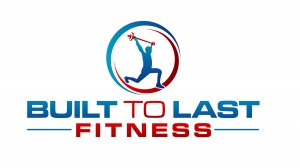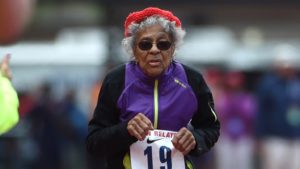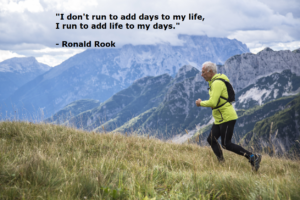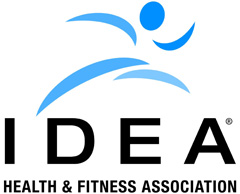Fitness for Seniors
Fitness for Seniors: Never too Late
Ida Keeling is a champ – literally. Ida Keeling has been breaking track and running records since 2012. In 2016, she became the oldest woman to race in the 100m sprint at the Penn Relays in Philly…she was 100 at the time. At the time of this writing, she is 103 and still going strong. Ida has an incredible story and she serves as a role model to us all.
Unfortunately, cynics love to point out how she tends to be the exception. They might be right, but it doesn’t have to be that way. Our bodies are remarkable machines, blessed with evolutionary adaptation. If our bodies are continually nourished with good food, proper breathing, and abundant movement, they will thrive. This article will break down some of the obstacles facing our aging population and discuss key areas that should be addressed in any functional fitness regimen.
Obstacles
“I’m too old. I have bad balance. I have a bad back. I just can’t do that.” While an older individual might voice these as very legitimate concerns – they are really just excuses. I say this not to be disrespectful, but to identify two of the core problems present in our society: fear and ignorance. Fear is a deep and powerful emotion. It can be an incredibly useful tool as we are hard-wired for survival, but sometimes our brains fail to adjust to new information. Ignorance is a lack of knowledge but we can always learn new skills and techniques to better ourselves, even in old age. We have been coddling our older generations for a long time. Senior fitness programs are more commonly chair-based, without requiring the proprioceptive balance used when bearing weight in a standing position. Ground-based training in seniors is very rare. While it may not be appropriate for everyone, particularly recent post-op patients with joint replacements, ground-based work can provide a plethora of benefits including core strength, balance, and stabilization. We have done a great disservice to our aging adults by making everything too safe. We have taught our elder parents and grandparents that if an activity tires you out and feels uncomfortable, you shouldn’t do it. This couldn’t be farther from the truth. Remember Ida Keeling from before? She never bought in to that logic.
“Get up and do things, even if you don’t feel like it. Sometimes you don’t feel like doing this, that or the other. Do the thing that you don’t like to do first, and get rid of it.”
― Ida Keeling
There are many reasons why senior fitness has been lacking, but the fitness industry is beginning to move in the right direction. It’s what we can do right now that really matters.
What’s Important: Crucial Areas of Focus for Our Active Aging Adults
There are 4-6 areas that should represent the lion’s share of a senior’s exercise routine. These areas are great targets for everyone, not just our older folks. Most human beings would benefit from this training. Please note that many of these items overlap. It helps to think of the human body as a complex and interdependent system, not a mere collection of parts.
(General) Movement and Mobility
As we age, our bodies tend to naturally experience physiological changes such as a loss of muscle mass, loss of muscle power, loss of bone density, and a loss of motor control. What gives? The old maxim “use it or lose it,” hits the nail on the head. The famous SAID principle, promulgated by trainers and strength coaches everywhere, states that in the body there is a specific adaptation to imposed demands. If you repeatedly perform a specific physical task, your body (and brain) will become conditioned to execute that task more efficiently. Your brain will create and deepen the neural pathways that are utilized during that movement pattern. Your muscles respond to the stress of the movement by building the muscle fibers via protein synthesis. The reverse is also true. If you don’t perform any physical tasks (and just remain sedentary), your body will become conditioned to do just that – nothing. It is vitally important to remain active and continue to perform as many Activities of Daily Living (ADLs) as possible.
Leg Strength/Training
Leg strength is paramount for seniors for a number or reasons. The most obvious reason is to remain mobile and physically capable of getting around on one’s own feet. Leg strength is mandatory for negotiating stairs and safely getting in and out of a seated position. Relying on a grab bar in a bathroom or the arms of a chair puts our seniors at risk. For example, if an elderly man is not strong enough to rise from a toilet without gripping a bar and then suddenly loses his grasp, he could easily fall, sending him crashing onto a tile floor. This is to be avoided at all costs. Strength training guru, Charles Poliquin, reminds us that “strength is gained in the range that it is trained.” If your grandfather never got his hips lower than a standard chair with a seat height of 20 in. then it is unlikely he could do so from a lower sofa or loveseat. It is wise to train utilizing full range of motion (ROM), even if assistance is necessary. Controlled negatives, i.e. slowly moving through the eccentric or lowering phase of an exercise, are a very beneficial technique for those looking to improve leg strength.
Balance
Balance is normally the first aspect addressed when programming exercise for active aging adults. It makes sense because fall prevention is critical for the aging population. Little kids fall all the time and seem to be none the worse for wear. The reverse is true for fully mature older individuals. The reason for this disparity is not simply “age” but physiology and lifestyle. Adults carry much more body mass than children, and typically lack the tissue quality present in young growing bodies. A senior’s skeleton is rigid and bone loss due to osteopenia or osteoporosis is common. Arthritis, whether congenital or contracted, can wreak havoc on joints and the spine. Motor control, power, and agility also begin to lessen as nerve cells degrade. This harsh combination makes a strong case for balance training. Luckily the research suggests that motor skill acquisition is achievable at any age. If a skill is lost, it can be relearned. You might wonder what is the best way to improve balance. During the early 2000s, when Functional Training started to really take off in the fitness industry, unstable surface training was all the rage. BOSU® Balance Trainers and wobble-boards started showing up everywhere. While good in theory, these tools are not optimal for balance training. The implements tend to be too unstable, used aggressively, and often result in ankle injuries. Exercises that demand core stability while mobilizing the limbs are a better alternative. Chop and lift patterns and single-leg exercises are terrific examples. Tai Chi utilizes many movements that require weight transfers and controlled stepping and is very beneficial as well.
Core
Core training goes far beyond targeted abdominal exercises. The core has a very complex structure with multiple functions. People have written entire books on the topic. The system is vast, but a basic understanding of core form and function is required to make the most of core training. The core is not just your “abs.” The rectus abdominas muscle is your superficial six-pack muscle. Note, it is a singular muscle. The true core is a three dimensional, 360 degree box of musculature that surround the ribcage and the pelvis. Muscles of the core include the internal and external obliques, the transverse (and rectus) abdominas, the lower back muscles, and the muscles of the pelvic floor. For our purposes, also consider the diaphragm and the glutes as being “core muscles.” The core protects vital organs, provides stability to the spine, and serves as the vital link between the upper and lower body. When a boxer throws a punch or a baseball player swings a bat, power is transferred from the lower body to the upper body in a rotational pattern. A weak untrained core will cause inefficient movement and a loss of power. An efficient reactive core will enhance balance as well. Example of exercises that should be included in a senior fitness program include the Pallof Press, plank variations, chops and lifts, bird-dogs, and dead-bugs. If you are familiar with these exercises you might have noticed that all of them either resist motion, move in a diagonal pattern, or both. This provides the biggest bang for your buck when training the core.
*BONUS: Ground-based Training
This category of training should not really be considered as “bonus” as it has such a huge benefit, but lack of mobility, unforgiving hard surfaces, and surgically replaced joints often make this type of training impractical. The Dutch have been mitigating this in a successful fall prevention program that uses dense mats for practice falling and recovery techniques. Check out this excellent article here. Progressions or appropriate regressions of the Turkish Getup exercise are great for positional changes and stabilization. However, they are technically demanding and safest when performed under the supervision of a trained professional. Rolling patterns, as well as quadruped (“all-fours”) and half-kneeling exercise variations are key movements in ground-based training.
*BONUS: Grip Strength
If you’ve ever been defeated by a stubborn jar of pickles you might see the value in training the grip. The abilities to firmly grab, squeeze, pull and twist are not only for the primates of the jungle but vitally important for seniors as well. As humans, we require these abilities for basic ADLs. Most importantly, a strong grip can be the last line of defense for the elderly. If an elderly woman falls and sustains a fracture of the hip or leg, she might need to drag herself on the floor to reach a phone or alert button.
Wrap up: Senior Fitness in a nutshell.
We’ve covered a lot of material. In the end, I hope you have witnessed a paradigm shift on your approach to aging. The golden ticket to a vibrant, energy-charged life is having the right mindset. One of the Built To Last Fitness core values found here is Perseverance: Never Give Up, Never Quit. It does not matter what age you are or where your physical limits may lie, you can always take steps to improve. For our aging seniors, keeping active is absolutely essential. Again, the phrase “use it or lose it” is true. Regaining stability, balance and leg strength will safeguard against mishaps like falls. The principle of progressive overload dictates that the training stimulus must be increased if we are to improve at all. Therefore, senior exercise routines should not be so easy and safe that progress is nil. Do what you can to train within a full range of motion. Don’t forget, have fun! An active lifestyle and a consistent training program will allow you to physically do the things you want to do in your life. Take action and remember to enjoy the ride.
To Your Lasting Fitness,
Matt
Resources:
Articles/Websites:
– Nervous System: http://www.ellisonfoundation.org/research/aging-of-the-nervous-system
– Nerve Fibers: https://www.ncbi.nlm.nih.gov/pubmed/14501200
– Motor-skill Learning: https://eurapa.biomedcentral.com/articles/10.1007/s11556-008-0030-9
– Core: https://breakingmuscle.com/fitness/do-you-know-what-your-core-really-is-and-what-it-does
– Dutch Fall Prevention: https://www.nytimes.com/2018/01/02/world/europe/netherlands-falling-elderly.html




